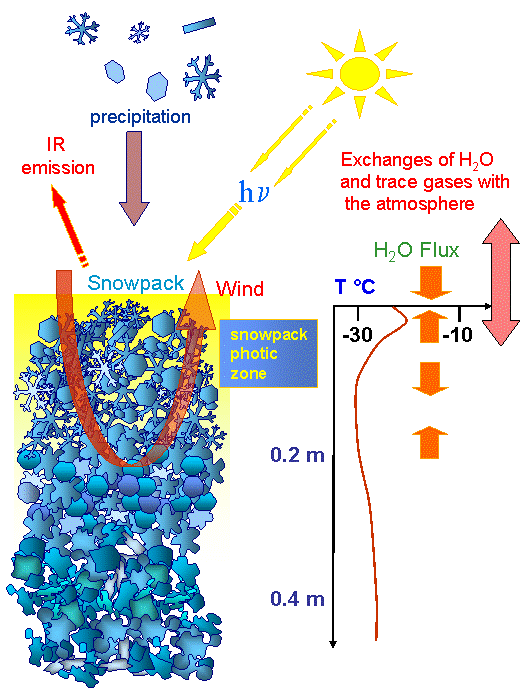|
|

|
|

|
|

|
|

Snow is a chemically active medium because :
- It is a multiphase system composed of air, ice crystals, trapped aerosol particles and dissolved and adsorbed gases.
- It is an irradiated medium. Al least the top 10 cm of the snow is subject to intense sunlight. This highly irradiated zone is called the photic zone. Snow is therefore a photochemical reactor.
Snow is also a porous medium through which air can diffuse and circulate:
- Snow is a ventilated medium.
- Snow can therefore exchange trace gases with the atmosphere and impact atmospheric composition. In fact, the composition of the atmosphere above snow-covered regions cannot be explained without taking into account air-snow exchanges.
Moreover, time-variable energy exchanges at the snow surface (incident sunlight, thermal emissions, etc.) produce transient temperature gradients in the snowpack. These gradients are teh driving force for snow metamosphism. They cause sublimation-condensation cycles that remobilize dissolved and adsorbed trace gases, and this contributes to the reactivity of the snowpack.






